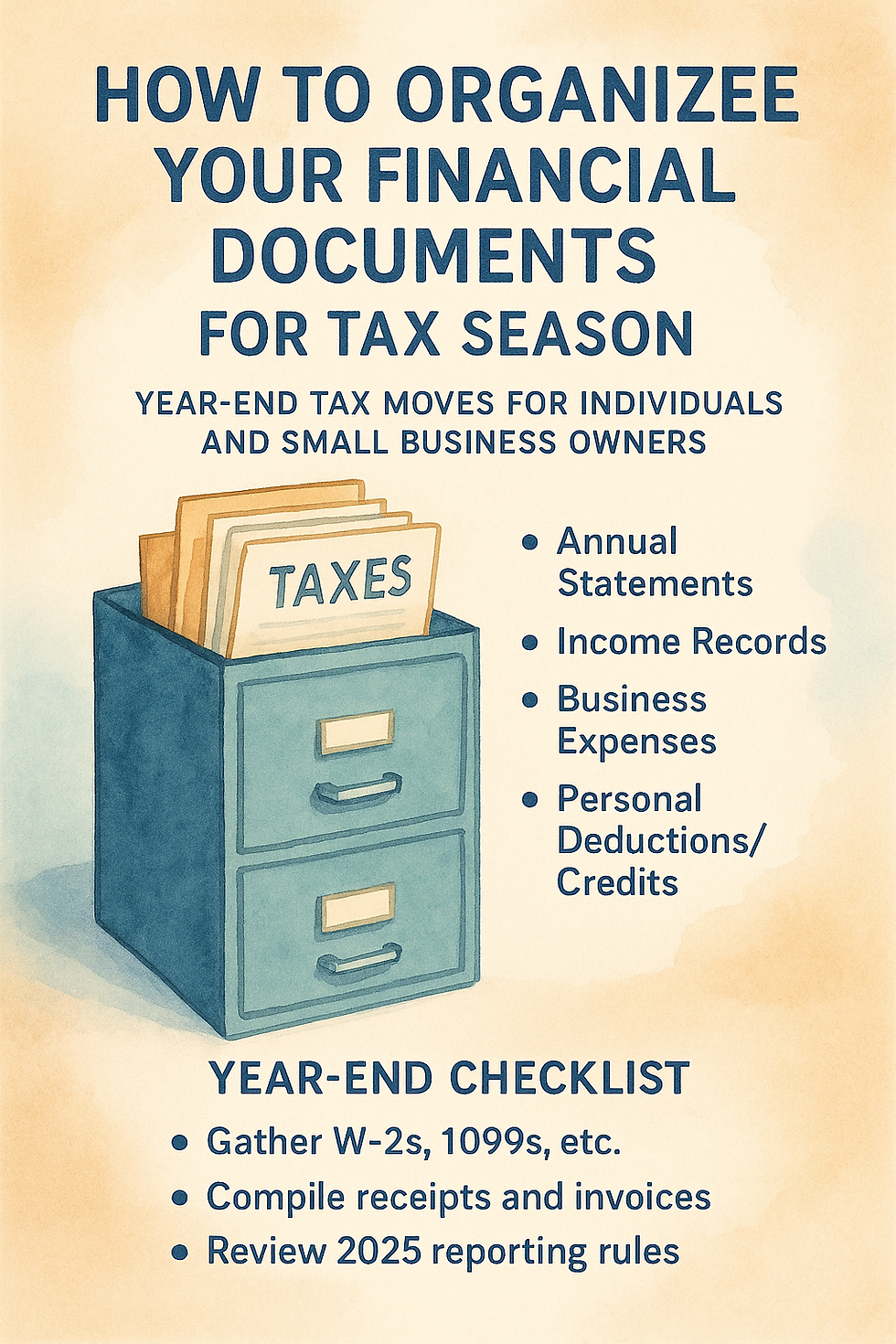Where Did My Paycheck Go? Understanding Payroll Deductions without the Jargon
- Gloria

- Feb 18
- 3 min read
Have you ever looked at your paycheck and wondered, "Where did all my money go?" You're not alone! It can be frustrating to see your gross pay shrink before it even reaches your bank account. But understanding payroll deductions doesn’t have to be overwhelming. Let’s break it down in a way that makes sense—no accountant-speak, just plain English.
A Quick Look at Your Pay Stub
Your paycheck includes a lot more than just the amount you take home. Here’s a simple breakdown:
Gross Pay: The total amount you earned before anything gets deducted.
Deductions: Amounts taken out of your paycheck before you receive the rest.
Net Pay: Your "take-home pay"—the amount you actually get.
Now, let’s take a closer look at one of the biggest categories of deductions: taxes.

Understanding Payroll Tax Deductions
Taxes are usually the biggest chunk missing from your paycheck. Here’s what they cover and why they matter:
Federal Income Tax
This is the portion of your paycheck that goes to the federal government. It’s not an exact amount owed but rather an estimated payment toward your annual tax bill.
When you file your tax return, the IRS looks at all of your income—wages, investments, side gigs, and more—to determine your actual tax liability. If too much was withheld from your paychecks, you get a refund. If too little was withheld, you owe more at tax time.
Your withholding is based on the information you provided on your W-4 form when you started your job. If you’ve experienced life changes, like getting married or starting a side business, you may need to adjust your W-4 to ensure the right amount is withheld.
State Income Tax
If you live in a state that has an income tax, you’ll see a separate deduction. Just like federal income tax, this is an estimated payment toward your state tax liability. Some states have a flat tax rate, while others use a progressive tax system like the federal government. If you live in a state with no income tax, you won’t see this deduction at all.
FICA (Social Security & Medicare)
FICA, sometimes called payroll taxes, is separate from income taxes and is calculated based on the wages you earn from each paycheck.
Social Security: You contribute 6.2% of your wages, and your employer matches that amount. This tax helps fund retirement benefits for today’s retirees and ensures you’ll receive benefits when you retire.
For 2025, wages over $176,100 are not subject to the Social Security portion of FICA
Medicare: You contribute 1.45% of your wages, and your employer also matches this amount. Medicare helps provide healthcare coverage for retirees and some disabled individuals.
There is no cap on the Medicare tax.
At higher income levels, an additional 0.9% Medicare tax applies.
If you have a side business, you are responsible for paying the full 15.3% FICA tax on your net self-employment income (both the employee and employer portions). We’ll cover self-employment taxes in more detail in a future post.
While payroll taxes reduce your take-home pay, they serve an important purpose. These contributions ensure that programs like Social Security and Medicare remain available for you and others in the future.
What’s Next?
By understanding your paycheck, you can make informed decisions about your tax withholdings and financial planning.
Taxes are only one part of payroll deductions. In future posts, we’ll cover other deductions, including health insurance, retirement contributions, and ways to adjust your withholdings to make sure you’re keeping more of your paycheck while staying compliant with tax laws. Stay tuned!
The information provided in this blog is for general informational purposes only and is not intended to be comprehensive or serve as professional advice. Every business and financial situation is unique. I encourage you to consult with a qualified professional to address your specific needs and circumstances.





Comments